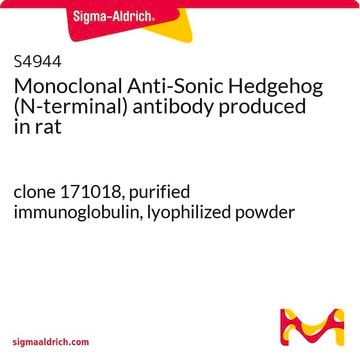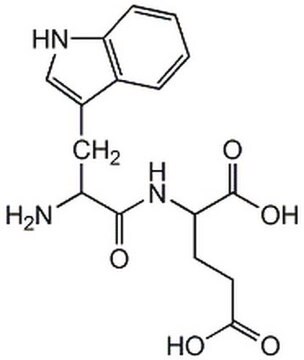Kluczowe dokumenty
T8703
T0070907
≥98% (HPLC)
Synonim(y):
2-Chloro-5-nitro-N-4-pyridinyl-benzamide, Benzamide, 2-chloro-5-nitro-N-4-pyridinyl-
Wybierz wielkość
794,00 zł
Wybierz wielkość
About This Item
794,00 zł
Polecane produkty
Poziom jakości
Próba
≥98% (HPLC)
Formularz
powder
kolor
white
rozpuszczalność
DMSO: >10 mg/mL
H2O: insoluble
temp. przechowywania
2-8°C
ciąg SMILES
[O-][N+](=O)c1ccc(Cl)c(c1)C(=O)Nc2ccncc2
InChI
1S/C12H8ClN3O3/c13-11-2-1-9(16(18)19)7-10(11)12(17)15-8-3-5-14-6-4-8/h1-7H,(H,14,15,17)
Klucz InChI
FRPJSHKMZHWJBE-UHFFFAOYSA-N
Opis ogólny
Zastosowanie
Działania biochem./fizjol.
Cechy i korzyści
Uwaga dotycząca przygotowania
Kod klasy składowania
11 - Combustible Solids
Klasa zagrożenia wodnego (WGK)
WGK 2
Środki ochrony indywidualnej
dust mask type N95 (US), Eyeshields, Gloves
Wybierz jedną z najnowszych wersji:
Certyfikaty analizy (CoA)
Nie widzisz odpowiedniej wersji?
Jeśli potrzebujesz konkretnej wersji, możesz wyszukać konkretny certyfikat według numeru partii lub serii.
Masz już ten produkt?
Dokumenty związane z niedawno zakupionymi produktami zostały zamieszczone w Bibliotece dokumentów.
Klienci oglądali również te produkty
Active Filters
Nasz zespół naukowców ma doświadczenie we wszystkich obszarach badań, w tym w naukach przyrodniczych, materiałoznawstwie, syntezie chemicznej, chromatografii, analityce i wielu innych dziedzinach.
Skontaktuj się z zespołem ds. pomocy technicznej











